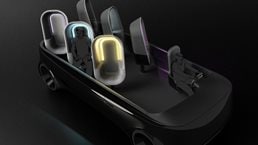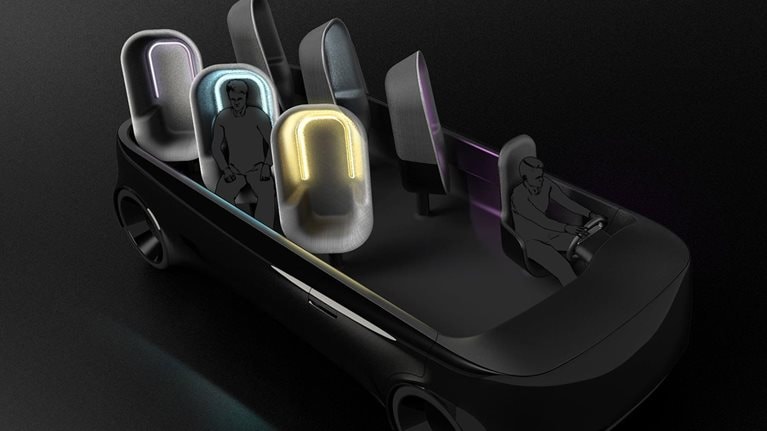Although shared mobility is a nascent force on the automotive scene, it generates a lot of buzz. This hype can make it hard to understand what’s actually happening in the sector. To bring greater clarity to the situation, McKinsey surveyed 2,000 shared-mobility consumers across ten US cities: Austin, Chicago, Dallas, Denver, Kansas City, Milwaukee, New York City, Peoria, Richmond, and San Francisco. The effort looked at cities of varying sizes, population levels, and demographic compositions to ensure an adequate representation of North American consumers.
Stay current on your favorite topics
The survey revealed changing attitudes and behavior among mobility customers. It also examined ride-hailing and ride-sharing trends, the effect of recent disruptions on perceptions of shared vehicles, and the importance of car ownership to consumers. In addition, respondents offered a glimpse of their thoughts on the future of mobility in the United States.
The US mobility landscape is beginning to shift
Consumers appear to use taxis and buses significantly less than they did in the recent past, with price and service reliability driving much of this decline. Taxi rides decreased by nearly 10 percent from 2014 to 2016, bus rides by 5 percent in the same period (Exhibit 1).

Several factors affect the mobility experience—and customers list high prices and low comfort levels as key elements of a bad one. Users cited the cost of taxis as a big drawback, and their main complaint about mass-transit options such as buses and trains centered on a lack of comfort. Users also spoke to what makes for a good experience. For taxis, convenience was the key to satisfaction, while for buses it was price. Attitudes toward subway and train rides reflect on-time reliability and safety, respectively.
Ride hailing and ride sharing have grown in importance
Last year, around 15 to 20 percent of North America’s population used ride-hailing services, predominantly concentrated in urban areas. The primary reasons users choose them are ease of use, lower prices than conventional taxis charge, and convenience (Exhibit 2). Consumers base their selection of a ride-hailing service primarily on four factors: the driver’s behavior, price, the condition and cleanliness of the car, and wait times.

When the survey asked consumers what they didn’t like about ride hailing, the most common response—from 33 percent of them—was that it was too expensive during “surge pricing” periods, such as rush hour. This suggests that customers value price over other considerations and will base their transportation choices on this sensitivity. More than a quarter complained about the lack of mobile Internet access or the quality of access, if it was available. As network coverage grows, however, this issue will likely become less of a problem. Consumers said the best way to improve ride-hailing services would be offering more competitive prices. Other suggestions focused on coaching drivers to improve their attitudes and behavior and on reducing wait times.
Would you like to learn more about the McKinsey Center for Future Mobility?
Current ride-hailing customers said their usage will soon rise significantly; nearly a third said it would “increase a lot” over the next two years. Conversely, a sizable proportion of nonusers (38 percent) indicated that they were not interested in ride hailing in the future, and an additional 20 percent expressed only slight interest in it. These findings suggest a need for targeted awareness-building campaigns that take the mystery out of ride hailing while emphasizing its benefits in both convenience and cost.
One key finding: the status conferred by private-car ownership continues to decline. Increasingly, consumers view cars simply as tools for moving from one place to another. For example, given the choice of a free car or free ride-hailing service, higher-income segments preferred free rides over free cars; none of those making $150,000 or more chose the car (Exhibit 3).

Less affluent consumers indicated a higher preference for free cars: among those making $75,000 or less, roughly 70 percent selected them. The bias of affluent consumers toward ride hailing likely signals a greater preference for convenience. However, when consumers were given a survey option to trade in cars for free ride-hailing service, over half expressed no interest.
Ride sharing is similar to ride hailing but more akin to carpooling. A third of users said they expected to increase their use of ride sharing “a lot” over the next two years. Yet more than 60 percent of survey takers expressed either no or very little interest in using ride-sharing services in that time frame. This represents another area where awareness-building initiatives make sense.

Cracks in the ridesharing market—and how to fill them
Most respondents said they did not use carpooling, because of time constraints (“I am always in a hurry and don’t want to wait”), privacy needs, and safety concerns. Among consumers who carpooled, most—71 percent—did so to save money.
Future mobility choices will be more diverse
There’s a consensus that the use of private cars will decline in the long term, partly as a result of an increase in autonomous “robo-taxis” and the use of public transportation. When the survey asked consumers to compare their current mobility usage with their probable choices 15 years in the future, they saw themselves using private cars 12 percent less. They also expected to choose ride-hailing and ride-sharing services 7 percent more, and to travel by public transportation 4 percent more.
As consumers increasingly embrace shared mobility, the automotive industry and other sectors need to recalibrate their business models and strategic thinking to account for this shifting landscape. McKinsey’s survey reveals an awakening among consumers about the potential expansion of their mobility options. Industry players need to position themselves to capitalize on these emerging mobility disruptions to remain ahead of this rapidly evolving game.


